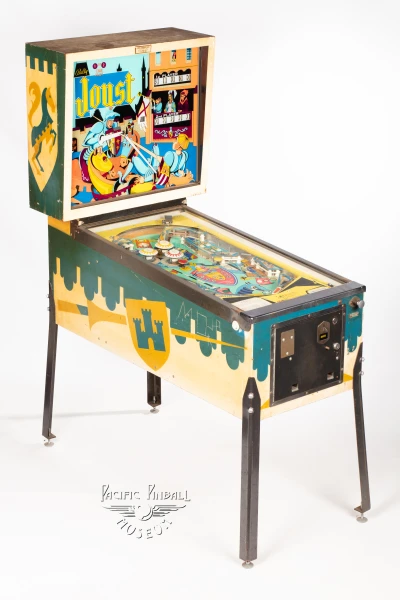Joust
Joust Preview Image

Machine Details
Manufacturer
n/a
Year
n/a
Technology Era
n/a
Machine Description
Content Under Review
Help us improve this content
Your support accelerates our content verification efforts.
Support Our WorkThe Joust pinball machine, released by Williams Electronics in 1983, was based on the highly successful arcade game of the same name that had been released the previous year. This marked one of the early attempts to translate a popular video game property into the pinball format, setting a precedent for future video game adaptations in pinball.
The machine captured the medieval fantasy theme of the arcade game, featuring knights jousting atop flying ostriches. The playfield incorporated elements familiar to fans of the video game, including representations of platforms and lava pits. The artwork and playfield design maintained the distinctive visual style that made the arcade version so recognizable, while adapting it to work within the mechanical constraints of pinball.
As a solid-state machine from the early 1980s, Joust pinball represented the era's technological capabilities with digital scoring and electronic sound effects. The game featured multiple ramps and targets designed to simulate the combat and flying mechanics of its arcade counterpart. While not as widely distributed as some other Williams titles of the period, it holds significance as an early example of cross-medium gaming adaptation.
While production numbers for the Joust pinball machine were relatively modest compared to other Williams titles of the era, the machine is notable for its historical position bridging the arcade video game and pinball worlds. It demonstrated both the potential and challenges of adapting video game properties to the pinball format, a practice that would become increasingly common in subsequent decades.